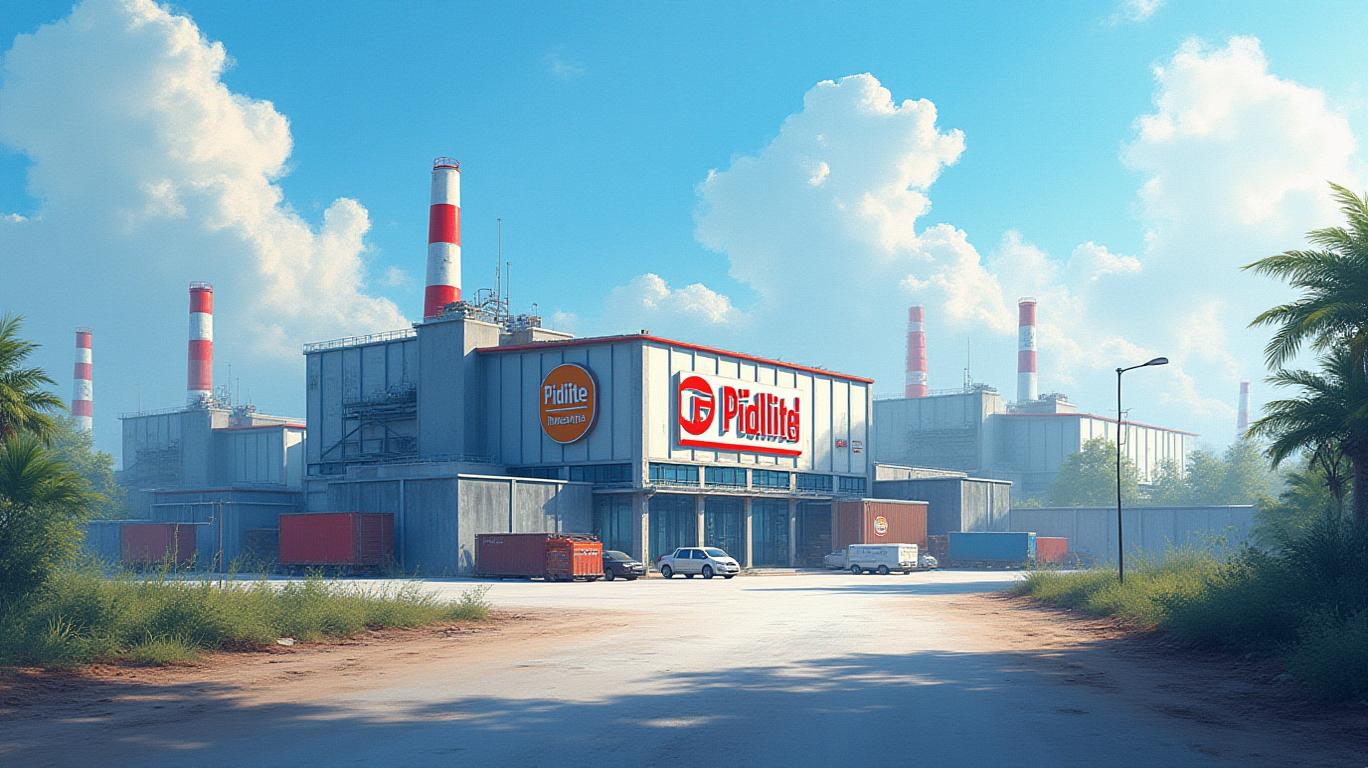Pidilite Industries Q4 Profit Surges 41%, Driven by Volume Growth and Margin Resilience
Pidilite Industries, a leading Indian chemical and adhesives manufacturer, delivered robust financial results for the fourth quarter of fiscal year 2025 (Q4 FY25), with net profit jumping 41% year-on-year (YoY) to ₹428 crore. Consolidated revenue rose 9.8% to ₹3,222 crore, fueled by strong underlying volume growth (UVG) and disciplined cost management. The results highlight the company’s ability to navigate macroeconomic headwinds while capitalizing on demand recovery in key sectors.
Ask Aime: How did Pidilite Industries' Q4 FY25 financial results showcase its resilience amidst macroeconomic challenges?

Key Financial Highlights
- Net Profit: ₹428 crore (up 41% YoY), driven by improved gross margins and cost control.
- Revenue: ₹3,222 crore (up 9.8% YoY), with UVG of 9.8% across categories and geographies.
- EBITDA: ₹632.5 crore (up 9.6% YoY), with margins expanding to 20.1% (vs. 19.8% in Q4 FY24). Gross margins rose 154 basis points to 20.6%, benefiting from lower input costs.
- Dividend: ₹20 per equity share, a 20% increase from the previous year, signaling confidence in cash flow stability.
Segment Performance and Strategic Leverage
The company’s Consumer and Bazaar (C&B) segment, which includes household adhesives and paints, reported UVG of 8.0%, marking sequential improvement. Meanwhile, the Business-to-Business (B2B) segment delivered UVG of 16.4%, underscoring strong demand from industrial and construction clients. Domestic subsidiaries contributed significantly, with double-digit sales and EBITDA growth, while international operations (excluding Pidilite USA and Pulvitec Brazil) maintained parity with prior-year performance.
Managing Director Sudhanshu Vats noted that the results reflect “strategic investments in brands, supply chain optimization, and talent development.” He highlighted cautious optimism about improving demand in the construction sector, citing expectations of favorable monsoons and increased government infrastructure spending.
Market Reaction and Analyst Outlook
Pidilite’s shares closed 0.6% lower at ₹2,957.5 on the NSE on the day of the results release, but the stock has gained 5.06% year-to-date and 1.83% over the past 12 months.
Analyst ratings remain mixed, with 10 out of 17 recommending a “buy,” five advising a “sell,” and two a “hold.” The average 12-month price target of ₹3,130 implies a potential 5.6% upside from current levels. Analysts emphasized the need for sustained volume growth and margin resilience amid global economic uncertainties.
Full-Year Perspective and Risks
For fiscal year 2025, consolidated net profit rose 19.9% YoY to ₹2,096 crore, while revenue increased 6.9% to ₹13,388 crore. Despite these gains, the company remains vigilant about geopolitical risks, including trade tensions and currency fluctuations.
Conclusion: A Balanced Growth Story
Pidilite’s Q4 results demonstrate its capacity to leverage volume growth and margin discipline in a challenging environment. The UVG of 9.8%, coupled with a 20.1% EBITDA margin, suggests operational efficiency is intact. With a dividend yield of ~0.7% (based on current stock price), the company balances shareholder returns with reinvestment in high-growth segments like B2B chemicals.
However, risks persist. Analysts caution that global demand volatility and input cost pressures could test margins in FY26. Pidilite’s focus on premium brands and geographic diversification—particularly in Southeast Asia and Africa—will be critical to sustaining growth.
For investors, Pidilite’s valuation appears reasonable given its 13.5% trailing P/E ratio (vs. the industry average of 18.3%). The stock’s 5.6% upside potential aligns with its conservative growth trajectory. While the company’s fundamentals remain strong, cautious investors may prefer to wait for clearer macroeconomic signals before taking a long position.
In sum, Pidilite’s Q4 performance reaffirms its position as a resilient player in the chemicals sector, but its future trajectory hinges on executing its growth strategy amid persistent global uncertainties.


























